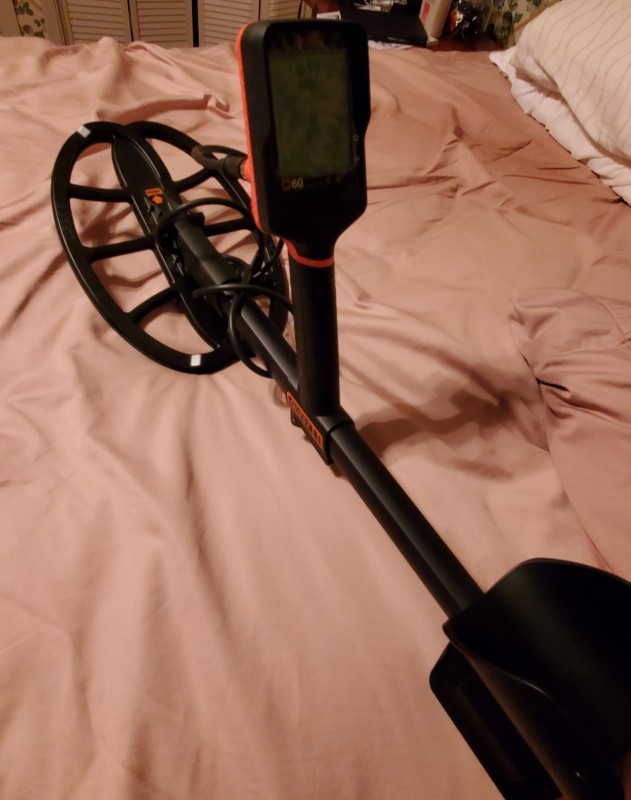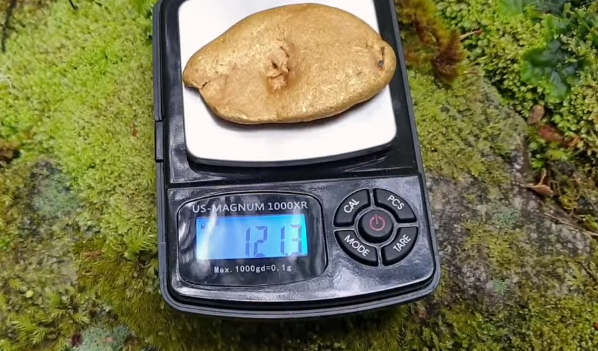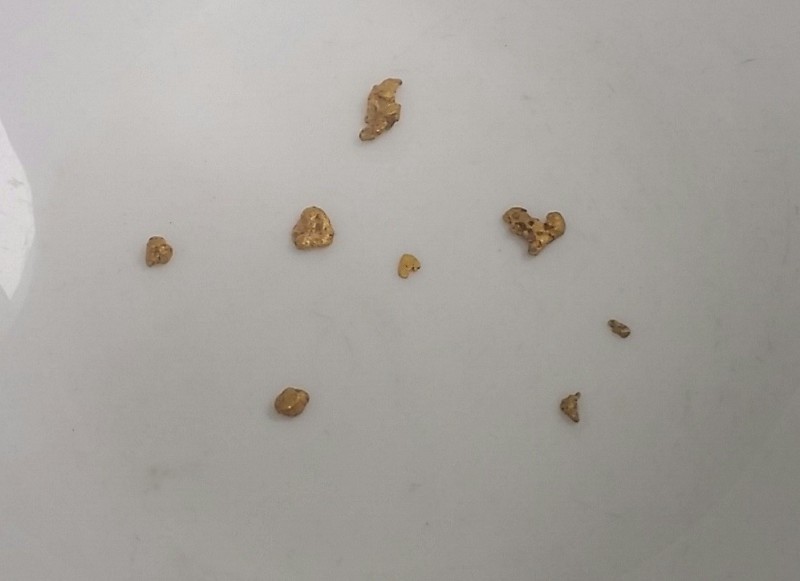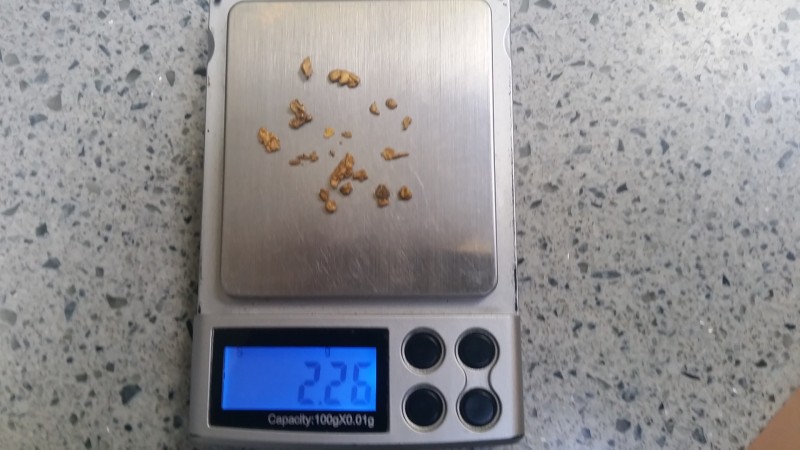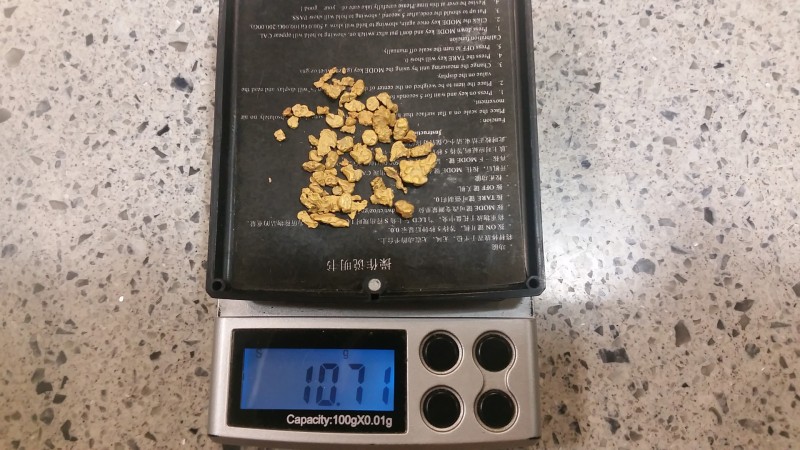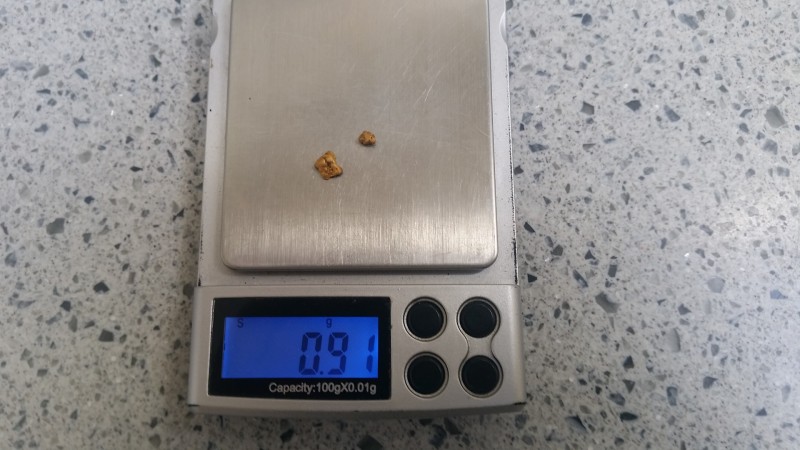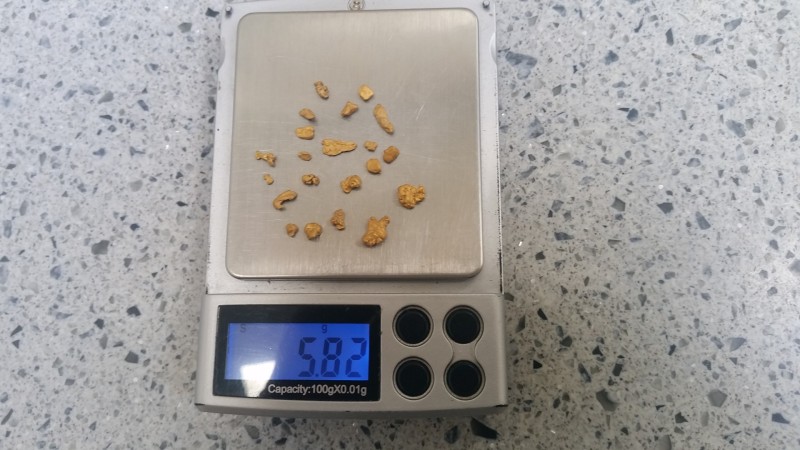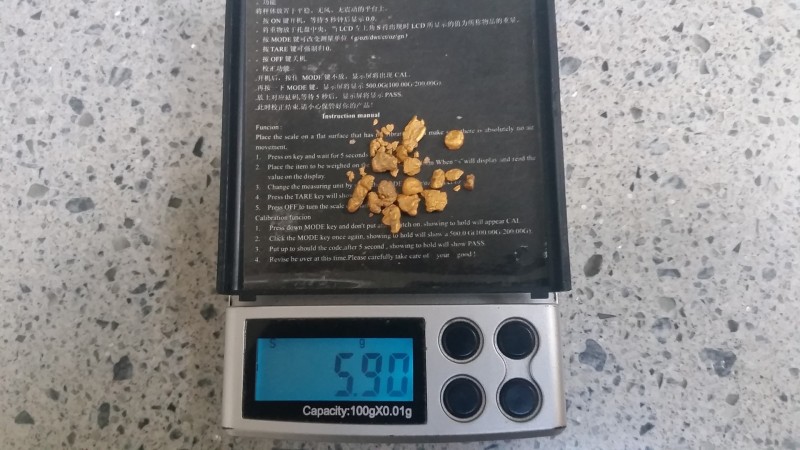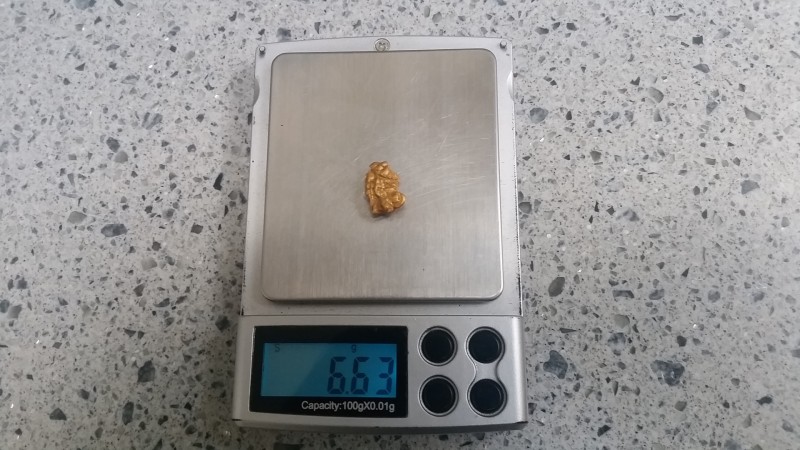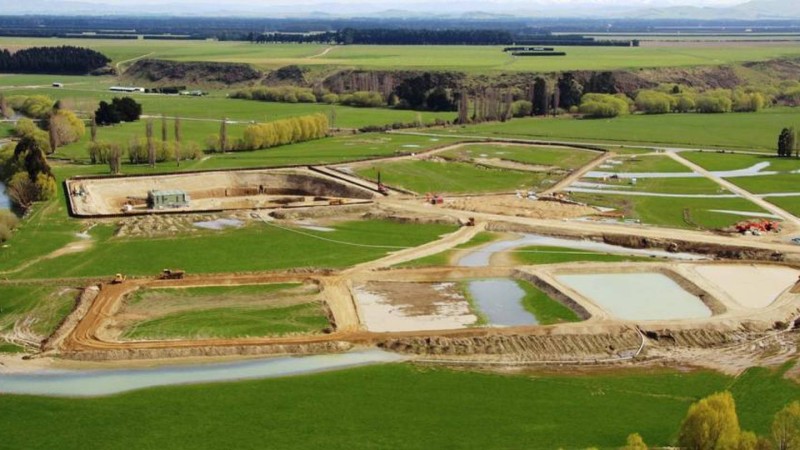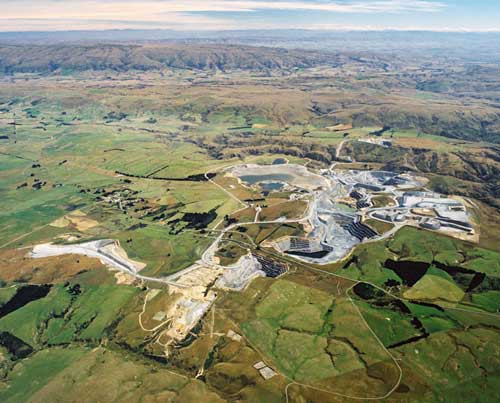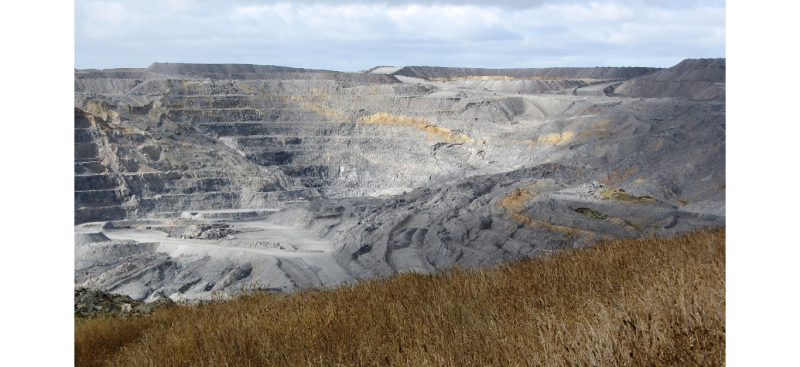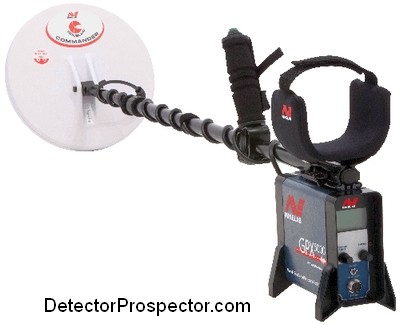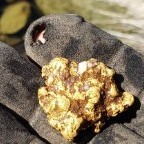Search the Community
Showing results for '"GPX 4500"'.
-
These are your ground balancing pulse induction (GBPI) options new in U.S. dollars when not on sale here. Prices will differ in other countries. Don’t bother with anything else unless shopping used, then older model Minelab GPX detectors like the GPX 4500 might be a bargain possibility. Frequency does not matter with GBPI enough to even get into that. The case can be made the 7000 is not a PI but also not worth dwelling on that. Minelab GPZ 7000 $8499 Minelab GPX 6000 $5999 Minelab GPX 5000 $3999 Garrett Axiom $3995 Minelab SDC 2300 $3399 Garrett ATX $2379
-
.thumb.jpg.ac5e8ee36e43bcab745dbc623fcf1874.jpg)
Tdi Pro Coil Comparison On The Goldfields
Jim in Idaho replied to karelian's topic in White's Metal Detectors
Jim, before you go that trouble, let's wait and let the snow and ice melt around here, and let me do some testing with this coil. Then that might make an interesting comparison. There must be some electrical difference between them, or why the different labels? Unless it was done just on the ones they eventually exported to the states. Maybe initially they were included in a package deal or something on a GPX 4500, or other, and had the ML label, and then they started the TDI labels for some reason. No way to know. I'll keep you updated, in any case. Jim -
People often say their detector picks up planes going past, yet two GPZ's can detect quite close to each other with no interference at all, it takes you going within something like 50 feet of each other to have an issue. The same with the GPX 6000's, can detect right near each other no problems. I used to have a little more trouble with my GPX 4500 picking up JW's GPZ from a good 100+ feet away and he was blind to my GPX with his GPZ. So they can pick up a plane from a great distance but can only pickup EMI from another detector from a very close range, kinda shows the detector EMI doesn't travel too far I think.
-
I've been experimenting with my Manticore as a nugget hunter, kinda difficult with only an 11" coil as I can often have more than one pellet under the coil at once so I'm desperately waiting for a smaller coil but with the Nox 800 in highly contaminated gold areas with shot gun pellets I used to try take advantage of the Target IDs, the pellets almost always gave a 1 - 2 Target ID as most are on or near the surface and consistent targets, if ever I was getting numbers above that or even below it like a 2 - 3 - 4 -6 or something more bouncy it was far less likely to be a pellet that tended to just bounce solidly in the 1 -2 range and was more often than not gold, I always get excited when the numbers moved off the very solid 1 - 2 it was giving on pellets. The Manticore and I'm sure Nox 900 are doing the same thing with pellets but giving a broader range of targets off that pellet range thereby separating possibly more gold from pellets. Of course this only works if the area has all similar sized pellets of the smaller varieties which fortunately my areas mostly do. Very early days on this yet and no matter what you will miss gold by doing it, probably a lot of gold but if you just have so many pellets around that you spend all day recovering them it does give you an option whereby you can pull some gold from the pellets and waste far less time recovering pellets. The old pick or boot scrape method is fine when using something like the GPX 6000 that misses something like 60% of the very small lead pellets like the #9, but when switching to a VLF and it finds every single pellet known to man life gets more difficult in these crazy pellet areas. My previous method for dealing with this was using a less sensitive detector to the very small pellets like the GPX 4500 and gliding over most tiny pellets with no response but like the small pellets it missed some of the the small gold too so I prefer the Nox/Manticore method. The Nox 800 lumped a lot of small gold in the 1-2 range, the Manticore has spread those same nuggets out further making them easier to identify away from pellets. I also believe I can take advantage of this more than many because in more difficult soils the numbers are far more wild, in my milder gold area soils the target ID's remain good, think a coin hunter in mild soils vs a coin hunter in bad soils, the mild soil coin hunter is using and relying on target ID a lot where as the bad soil coin hunter can not rely on target ID's much at all.
-
Well how about if an after market coil company made some "ultra-hot DD Focused Core (DD-FC)" coils for the GPX 4500 and 5000? A DD coil hotter or equal to my 12x8" Evo on small gold would be nice.
-
I can understand that sentiment, the 6000 really is useless in difficult hot rocks, I can imagine the same in certain ground types. It really is a step backwards from older models like the GPX 4500/5000 and by the looks of it SDC in difficult ground conditions.
-

New To Pulse Induction, Got My Axiom
microsniper replied to Az_Ed's topic in Garrett Metal Detectors
Congrats and good luck Ed! The day I received my 1st PI ( Gpx 4500) was the turning point for me being able to find nuggets! I think partially it was psychological... it boosted my confidence knowing I had a capable machine, made me focus and dedicate more time and energy which in turn equalled more and more finds. Keep us posted on the AXIOM! -
Man this detector is sneaking in under the radar but believe me its a killer relic machine. I chatted with some guys from the UK before getting one and they didn't steer me wrong. For reference the Equinox 800 and Deus are my primary detectors but I also own a T2 SE, Tarsacci, and GPX 4500 and 5000. I hunt Civil War relics almost exclusively in mild soil. No salt water beaches, prospecting, or coin shooting but I'm betting the Q60 will do a great job in those areas as well. When these start hitting the shelves here in the states do yourself a favor and pick one up. I'll be selling all my detectors except the Deus and a GPX. Those 2 will always have their specialty. I'll try to get some video on this detector soon. Also I think the Quest Q30 is gonna take a bite out of the Simplex market.
-
Good Morning Treasure Detectives, My wife was kind enough to purchase for me a New Open Box GPX 4500, for putting up with her for 29 years. Not exactly her version of this story. June 29 will be 29 years, where did the time go. Back to subject, it came with the mono and double d coils, but need advise on what coil that is waterproof would be good for saltwater beach. Thinking 15" or about similar size. I have used my Simi Eliptical Mono Commander on my TDI and got great results in wet sand area. but did not put under water, because its only water resistant not proof. I would like to be able to use in wading depth. Yes I know expensive machine for being around water. I have waterproofed my TDI SL and will waterproof the GPX as well. need the extra depth. Didn't know they would be releasing the AQ so soon. would have told wife to wait. I thought the AQ was a year down the road. Maybe on our 30th anniversary. Right now have to use what I have. Moderate mineralization beach looking for jewelry size targets. Any help would be greatly appreciated, Happy Hunting and Stay Safe and Healthy to all! Lonnie
-
It happened last year with Craig Douglas (NuggetHunterNZ on DP Forum) finding a 177 Gram gold nugget and now it's happened again, these guys have now found a 121 gram nugget in a creek similar to how Craig found his this time using a GPX 4500 or 5000, not sure which one. And the video of it, these guys make a heap of good videos usually of them dredging but this time it was detecting when they found it. The video has a fair few gold finds on it, Perhaps I need to start looking in creeks more often 🙂
-
Nugget Finder 17" X 13" Z Search GPZ 7000 Coil
phrunt replied to cobill's topic in Detector Prospector Forum
So what is the go with Nugget Finder? have they discontinued GPX 4500/5000 coils including the DDX DD? Even the GPZ coils have disappeared off their website. They had their website under maintenance for some time and now its back not saying under construction anymore but now it only has the Xceed coil on it. https://www.nuggetfinder.com.au/ I understand they're "technology challenged" with the extremely basic website but it does seem odd the GPZ coils have disappeared off there entirely right after releasing another one, and with only one Xceed coil for sale according to the website they sell only one coil. Hopefully it's some sort of issue that they need to resolve with their website. I can understand discontinuing the older model GPX coils, Coiltek have been slowly winding back the models there too and X-coils discontinued them entirely some time ago, but the GPZ coils not being there seems weird. Sales of older GPX coils would be super slow with the second hand market dominating that and many moving off it onto newer detectors but surely the GPZ coils are doing OK. Hopefully all is well at NF, they've had a rough year or two by the sounds of it and selfishly I really want the GPX 6000 Sadie! -
If you strike it lucky, put in the hard yards to get out of the most commonly known areas and go a bit more remote you can do quite well, this has been a patch JW has found a couple of weeks ago remote in the mountains, he tends to drive there and sleep and detect the next day, then he's been going back to on the weekends to finish it off He was just showing some visitors the area for an exploration day and he took the GM along for a bit of fun and found these in 20 minutes Went back the next day again with the GM to the same spot and got these in 5 hours. All looking very promising so in come the big guns, the next day with the GM and 6000. Noticeable how the gold jumps when the 6000 comes to the party, the smaller bits are the GM checking dig holes. His wife even had a go with the 6000 and did pretty good for a short time, her first nugget was after 5 minutes It was getting a lot harder to find anything now so he went back with the GPZ and 15" CC And this was Friday just gone again with the GPZ and 15"CC with the tiny bits with the GM from the dig holes. And the GPZ didn't disappoint with a whopper for NZ on that last day So while yes we mostly have small gold, there is good gold to be found if you can get off the beaten track a bit, that is just not easy to do, the easy to access areas are just finding the bits missed over the years with older technology or by chance, once you get out away from civilization a bit things can improve dramatically. A small gold mining operation a short drive from my house pulled 75,000 oz of alluvial gold out of what was basically lush green farm paddocks over recent years. Unfortunately for me the gold is small, and very deep so not detectable gold. Alaska sounds so much like New Zealand it's crazy, the soil types, the geography, even the photos 😉 I guess it's why Parker from Gold Rush came here for in the hunt for his wash plant as the ones made here suited his needs, Tony Beets always has his Kiwi gear too. The two areas seem very similar. A mine on the North Island is pulling 35,000 – 45,000 oz gold a year at the moment, it's been there for a long time, a big open pit, and there is another mine in the South Island about 3 hours drive from my house is pulling 145,000 – 155,000 oz gold a year at a place called Macraes. Again, just in farmland. We do have insane black sand beaches though and they're the most mineralized places I ever detect and they just shut down any detector, Tarsacci made a coil specifically for our NZ black sand beaches called their NZ coil for the MDT 8000 detector, from what I can tell it wasn't a success, the only guy I know that bought one was disappointed. The most success I've had was with the GPX 4500 and 5000 where they could actually work on the beaches, the Equinox just overloads and gets about 2cm depth 😛 On the South Island’s West Coast, black sand beaches such as this have successfully been mined for gold. The sands also contain other heavy minerals eroded from the Southern Alps and concentrated on beaches through wave action. In the North Island the black sands are derived from volcanic rocks and dominate the 750 km of shoreline between Taranaki and Cape Rēinga in the far north. Auckland’s black sands are mined and smelted into iron. The same beach close up A lot of New Zealand is national park, and the gold is locked up forever safe in place you're not allowed to mine it, or even detect it, 30% of the entire country is National Park. The other areas are just too difficult to get approval to mine, it's a very difficult thing to do even for the hobbyist with a little dredge, very costly and difficult to get approval anywhere. So while we are known as the land of mild soils, we also have large areas of soils no detector can handle and hot rocks that near kill any detector with the best I've seen so far the GPX 5000 in the hot rocks, although still troubled at least works without sounding off on them when buried as if they were a small nugget, I'm looking at you GPX 6000.
-
Detector Unit Consistency (long Brainstorm)
phrunt replied to GB_Amateur's topic in Detector Prospector Forum
Don't worry about your Minelab pinpointer, they're an embarrassment to the Minelab name. I agree with the noise cancel, the quick noise cancel detectors are a gimmick. The new Manticore noise cancel works, just as do the traditional noise cancels like the GPX 4500/5000 and GPZ. I prefer the older detector style frequency shift over quick noise cancels, it works well. With detectors being so different with performance in different locations from soil conditions and local EMI it gets very hard to do good baseline comparisons. -
GPX 6000 And Powerlines With Mono Coils
phrunt replied to RONS DETECTORS MINELAB's topic in Minelab Metal Detectors
I bought one of them Rodworthy shields for my GPX 4500 as it was rotten near power lines, it's now on my GPX 5000, they actually do work, I was surprised as I thought they might be a gimmick. I also put a small wire from the Rodworthy cover to a screw on the front of the 5000 holding the end plate on which I know those screws connect to the sheilding ensuring the cover itself had connection to the shield of the detector for extra measure. I could even run other detectors closer to it which is easy to verify. -
This is not intended to get into every nitty-gritty little detail, but instead is a brief overview for those unfamiliar with the Minelab Pulse Induction (PI) detectors. The units released so far are the SD2000, SD2100 (and V2 variant), SD2200D (and V2 variant), GP Extreme, GP 3000, GP 3500, GPX 4000, GPX 4500, GPX 4800, and GPX 5000. The Minelab SD2000 was the first of the series, a genuine breakthrough in metal detector technology. It is the basis on which all the other models were developed. It was the first true prospecting pulse induction metal detector and it had a major impact in the Australian goldfields for which it was designed. The main drawback was a definite lack of sensitivity to nuggets weighing under a gram or two. The SD2100 and SD2100v2 are fairly simple manual ground balance units that refined the SD2000. The frequency could be manually adjusted to avoid interference from outside sources, such as a nearby detector. The SD2200d and SD2200v2 offer automatic ground balancing or a fixed/locked ground balance. They also introduced an iron disc feature of dubious reliability, audio boost, and automatic frequency offset. The GP Extreme offered enhanced sensitivity to small gold that was lacking in the earlier units. Much of this came about from Minelabs patented dual voltage technology (DVT) which was introduced with the GP Extreme and is featured on all subsequent models. There were quality control issues with the unit however and so performance varied on GP Extreme detectors. The GP 3000 is essentially just a refined GP Extreme and the GP 3000 performance is more consistent between units than was seen in the GP Extreme. Threshold smoothness was improved to be less erratic. The GP 3500 offered manual frequency tuning to help eliminate electrical interference and three tracking speeds for the automatic ground balance system. A button was added to the handle to allow for easy switching between the manual and automatic ground balance modes. The GP 3500 was the last of the analog models in the series. Where it all started - the Minelab SD2000 "Super Detector" The GPX-4000 was a break from the past, going to a digital control system. This allows for more adjustments but also more complexity. The GPX models can attain smooth thresholds on par with the best VLF units. A major advance is in the form of various optional "timings" that allow the detector to be customized for various types of ground mineralization and hot rocks that might be encountered. The earlier SD and GP models used a sealed lead acid battery with a 4 pin battery cable. GPX models feature a Li-Ion battery with 5 pin cable that is not compatible with the earlier models. The GPX-4500 is a basically a refined 4000. A pattern develops by now in that Minelab tends to make a major model revision, then follow up with another model that is just a refinement of the earlier unit. Model releases come about every two years with major changes about every four years. The Minelab GPX 4500 was extremely popular and the next model release was delayed to the point that two models came out. The Minelab 4800 was intended as the next release, but before it hit the market developer Bruce Candy came up with a couple new refinements different enough to warrant yet another model, the GPX 5000. The 4800 therefore became a sort of "non-model" as most dealers and users focused on the GPX 5000 as the new top-of-the line detector. The main change is a wealth of new timings allowing the GPX 5000 to get optimum performance in many varied ground conditions. The new Fine Gold timing in particular offers the ability to pull gold out of ironstone hot rocks that previous models missed. Minelab SD2200v2 pulse induction (PI) metal detector I disagree with those that say you can get more depth on large gold from earlier SD units than from the latest models. Having used all the models the largest improvement I've seen over time is vast improvements in threshold stability and the ability to adjust for more varied circumstances. It may be that in a particular location an SD will do just as well as a GPX. But not where I hunt. My SD units all had the famous Minelab "warble" whereby the threshold constantly wavered. This meant that small nuggets or very deep larger nuggets had to give enough of a signal to break through the waver. A far cry from listening to a rock solid threshold for the faintest whisper or "break" in the threshold. You can get just such a rock solid threshold with the GPX units. It is not that the GPX goes deeper, it is that you can hear nuggets you would miss with an SD as they could not be discerned as clear signals. More important on my ground was that my SD units could not tune out the intense magnetic basalt cobbles we have to contend with. The cobbles give a faint gold hit. So you either dug them all (impossible) or ignored the faint signals. But some of them were small nuggets or very deep larger nuggets. When the GPX arrived at my property I saw so many more small nuggets and deeper large nuggets come out of areas well hunted to the point of being "hunted out" that it was obvious the GPX had a significant edge. I'm not talking a nugget or two - I'm talking pounds of gold. The new GPX timings can allow for a clean solid threshold in areas where that was impossible with earlier units. Those that do not hunt such locations do not see the value in a GPX. Those that do know what I'm talking about. There is no way I'd go back to using an earlier model than the GPX-5000 by choice. Minelab GPX 5000 - pulse induction metal detector technology refined It should be noted is there are quite a few people modifying older SD units to get better performance on par with later units, and I'll admit these modified units are a wild card. Some swear by them and I'm not going to doubt them. But modifying older detectors is beyond where most people want to go so I think there is little doubt these units will only see use by a certain hardcore group of knowledgeable detectorists. The GPX 5000 has refined the platform to the point where realistically it is hard to think of ways the unit can be improved from a detecting standpoint. The only obvious deficiency is the ferrous discrimination system. While it does have its uses the ferrous discrimination on the Minelab PI detectors is notoriously unreliable and only to be used when absolutely necessary. Its use will inevitably cause gold nuggets to be left in the ground, misidentified as iron or steel. This area has been so resistant to improvement, however, that I look more for advances in the physical package as my most desired area for improvement. The general control box and rod design with backpack mounted battery has not changed since the original SD2000. Development of a GPX type detector housed in a package more reminiscent of the new Minelab CTX 3030 would be a major advance in the usefulness of the lineup with no actual change in performance aspects of the electronics. It has been well over two years since the GPX 5000 was released, and so I do not think it will be too long before we see what Minelab has in store next for nugget hunters. ~ Steve Herschbach Copyright © 2013 Herschbach Enterprises P.S. When I wrote this article in 2013 I had no idea that two more years would pass before we saw what Minelab had up next - the Minelab GPZ 7000. It turned out that Minelab also thought the GPX 5000 had taken the pulse induction as far as it could go, so the GPZ 7000 features new ZVT technology. The biggest surprise for me however was that Minelab may have paid attention to my "GPX in CTX housing" comment above. That may or may not make some people happy! And the GPX 5000? Still in production as the top-of-the-line PI from Minelab!
-
Would A Used Gpx-4500 Package Be Worth Considering?
matt replied to Az_Ed's topic in Minelab Metal Detectors
I'm not in tune with the used market, but that seems pretty high. If you watch this forum classifieds, you can probably get a much better deal. I found a lot of gold with a gpx 4500, several pounds. -
It is interesting you point that out as that's what I was starting to think, the scale is just different and a Nox 0 to 25 is in fact the same as the Manticore 0 - 30 and the boosted zone is the 31 to 35 which takes it higher than the original Nox but likely equal to the Nox 900. It's really hard to prove that however using edge of detection tiny targets is the best way I know of to establish that, and it is correlating to the scales being different with the overall similar sensitivity level when Nox is on 25 and Manticore is on 30, with the extra potential being in the redline zone if it can be used. The Manticore does seem to handle EMI better if you do for example 25 sensitivity on the Nox and 25 sensitivity on the Manticore however if you run the Manticore at 30 sensitivity where it appears to match the Nox on small gold performance then they are similar with their EMI issues. If you crank the Manticore up to 35 it's going crazy unless you're in a very secluded place, I've done some lakefront hunting away from houses and powerlines by about a 20 minute drive and 35 ran great with only a few farts and pops and no false ID's. If they have indeed adjusted the scale of the sensitivity levels it would make the Manticore artificially appear to handle EMI better than the Nox. I like the long press EMI cancel, I believe it does work better than the standard noise cancel of the Nox 800, it settles on a number. The short press seems a lot like the Nox, just a random number it lands on, very much like the GPX 6000 too, where as when you do a long press on the Manticore and it settles on a number after bouncing between numbers trying to sort itself out, then after a while it locks onto a number and stays there even if you continue to hold it, you can do another long press and it often settles on the same number. It really seems like it is doing something, and it does appear to calm down EMI in some situations better than the original Nox, not all where lowering sensitivity is required. The detectors I've noticed a noise cancel working the best is the GPX 4500/5000 and GPX 7000. Yes they're slow but they really do work. I do like the Manticore, it's build quality so far seems exceptional, can't fault it and it's very nice on the arm, the performance might be a bit hyped up by Marketing and this time also engineering, don't know why they brought the big guns of engineering in to market it as if it turns out not as good as they're saying people might start to distrust engineering as much as they do sales and marketing people. Perhaps with competitors engaging so much with customers they thought using engineers to do some marketing will be a more personal engaged approach that customers will like and they do lap it up.
-
I have a 13 year old GPX 4500 battery that still lasts a full day no problems and doesn't feel any worse than my new battery for life, charges to 8.1 volts when new they charge to 8.2 or 8.3 volts. They're just a battery pack with 18650's in them. I think too much concern is placed on batteries, good quality batteries seem to have a really good life. Look how many of us are still using our Nox and the battery behaves virtually like new, when did it come out? I can't even remember 2017 I think and I got one straight away, it's been drained and charged countless times. I charge it before every use. I wouldn't be concerned about the Axiom battery, I'm sure they've gone for a good quality one and when the time comes they do start to degrade I am confident Garrett will come to the party by having reasonable replacement costs involved, anything's going to be cheaper than a GPX 4500/5000 battery, they're an absolute rip off. Hopefully Garrett reply with DIY instructions for those wanting to take it on, it may even be a battery/batteries you can buy off the shelf somewhere which I think is likely.
-
Hi all, I'm from France, working with a GPX4500 of 2003. Yesterday when I started this old guy, I was affraid by this problem : - Sound when the treshold start is strange. - The autotune (research for free frequency) is a stable sound, with no variation. - And no power ! about 5 inch max for my metal digging pickaxe. I tried some factory resets, but the problem is always the same... I tried this one with another disc, trakking button, cable, headphone, battery, the problem come from the main box... Anyone knows this problem ? Thank you and have a nice day. Luis
-
I did a bit of Google searching for posts in the last year to see if I could get a feel for how much use the Garrett ATX gets and what people are finding with it. Not much to see though. The Garrett Australia Facebook page has some gold nugget finds https://www.facebook.com/GarrettAustralia/ The Findmall ATX Forum would have you thinking the ATX is strictly a beach detector Link deleted since Findmall Forum update broke all old links and other than that a few relic hunters out there using it. The ATX is one of my favorite detectors and quite a capable nugget detector, but after some early nugget detecting it now only gets used seriously as a beach and water detector. The problem is with ATX at $2120 and 6.9 lbs, limited coil selection, it is a tough machine to recommend for prospecting with a Minelab GPX 4500 running only $2699 at this time. I still consider the ATX to have been a missed opportunity. At $1699 in a lighter weight dry land package and sporting less expensive dry land coils the machine could have made a real impact on the prospecting world. Instead it is a rare sight on the goldfields.
-
From what I saw it's a winner at the saltwater beaches. Not sure how it would compare to a GPX 4500 or 5000. I may have to borrow a 4500 from my friend the next time we go out and bury some nickels at different depths just to see. Might even take the 6000 along as well. Not to prove one is better than the other but just to put things in perspective for those that are interested. My gut feeling is the Axiom and 4500 would be very close. We already know a dime at about 14" is no problem for both the Axiom and the Equinox 900 with the 12x15 coil. I would guess from past experience with PI's at the GSL it will pickup a nickel at 16 or 17". I will at some point post the video we did of the Axiom and Equinox going over different targets but will start a different thread.
-
This 11x7in mono coil on the Axiom is SWEET. I find it about the perfect size for most of the rough, rocky, or tight situations where I hunt. I don't feel too bad using it in more open areas either since 11 inches has pretty decent coverage. And it feels extremely light and balanced as well, very appreciated. I would 1000% rather use this combo over my old SDC 2300 and its less than stellar ergonomics. My previous favorite coil was my Nugget Finder Evolution 12x8 mono. I like this Axiom mono coil even more. The NF coil almost never left my GPX 4500 after I mounted it. I don't think I'll take the 11x7 off of the Axiom again any time soon either. These smaller coils can find really small targets and even go deep on larger gold. The 12x8 evo found the 1.2oz nugget pictured in my profile at about 12 inches and the big nuggets often take care of themselves. I also used the hot edge of the mono coil to great affect yesterday. I was able to use the left rounded "tip" of the coil to exactly pinpoint several of the smallest nuggets. I was actually able to forego using my pick and scooped the gravel from between bedrock ridges. Super nice to get the target in the scoop with just a single deep scoop and saved me a lot of time on target recovery, no doubt.
-
It's lucky we all don't follow that or manufacturers would have no reason to innovate, no reason to release new detectors and we'd be all stuck using old ones even if we didn't want to as without those of us that keep buying the new ones they could possibly go out of business or just become First Texas releasing the same detectors over and over again with new paint jobs and then that mindset would be 100% correct. There is no point buying a new detector if you learn your old one as it's the same as last years model but this year it comes out in pink camo and called a Super Deluxe Edition 🙂 A lot of buyers especially at the higher end of the market are not first time buyers and keep buying the new models to benefit from the enhancements. Would I do as well with my GPX 4500 as I can do with my GPZ 6000 if I knew the 4500 back the front? No. It's simply not as sensitive as the newer detector and will miss a lot of the gold the GPX 6000 will find easily. While I agree you'll do a lot better if you know your detector inside out, detectors have limitations and gradually newer models are breaking those barriers, the new technology does improve detection.
-
Deep Coins Which Would You Choose Pi Or VLF ?
palzynski replied to IronDigger's topic in Metal Detecting For Coins & Relics
I would use a VLF detector too , like the XP Deus2 , using deep modes like DEEP HC or RELIC , with a 11 coil especially if your roman coins are big coins ... I have tested a GPX 4500 a few years ago it is unusable over here because of the iron trash density , unless your are looking from coins from a coin spill or an hoard in a very limited area ... -
Revolutionary Detectors Over Time?
phrunt replied to glacialgold's topic in Metal Detector Advice & Comparisons
Without a doubt for me the GPZ 7000, I went from struggling to find any nuggets with my other detectors at the time like the earlier GPX 4500 to coming home with nuggets virtually every time I use it. Simple to learn and operate and just works, I've still not found a better detector at the job and I doubt I will for some time, there isn't a replacement on the market yet. The Equinox was my other game changer, it's ability to ID deep coins in my soils was a dramatic change from other detectors I was using previously, it did such a good job of cleaning out my local spots of silver coins it only left a small few for the even better IDing detector which I purchased after the Nox, the CTX to get. I'm quite new to detecting, I think I've ticked over 5 years now, I've not kept count and use my Equinox warranty expiring as an indication 🙂


